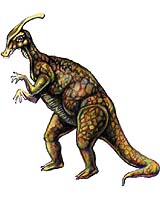Typical engineer box checker...
Mythbusters plan to uncover plane on conveyor belt
111,156 Views |
2087 Replies |
Last: 5 yr ago by toucan82
quote:
There is nothing to create lift under (and over)the wings, so it won't take off. It is occupying the same space, the wheels are just rolling.
OH HELL YES
quote:
Typical engineer box checker...
Says the CPA...
This is a test. If this had been an actual signature, you would have been instructed where to tune in your area for news and official information. This confirms this test of the signature broadcast network.
Creativity is encouraged in my job - just look at Enron.
quote:
There is nothing to create lift under (and over)the wings, so it won't take off. It is occupying the same space, the wheels are just rolling.
I'm too lazy to find it...so insert popcorn box eater guy here...
and then picture him becoming the incredible hulk and smashing the Mays school into eleventy billion tiny bits...all the while yelling "THE CONVEYOR IS MOOOOOOOOT!!!!one11!!!SevEN!!!"
The Mays school is made of titanium.
And I bet you don't know what that is...
This is a test. If this had been an actual signature, you would have been instructed where to tune in your area for news and official information. This confirms this test of the signature broadcast network.
This is a test. If this had been an actual signature, you would have been instructed where to tune in your area for news and official information. This confirms this test of the signature broadcast network.
BTW...that last sig was for MKF...
I will again be away from my computer today, so I wanted to stop in and reitterate the fact that there is no, I repeat NO, way in Hell that this airplane takes off.
Thanks and enjoy your Friday.
Thanks and enjoy your Friday.
Thanks Goose - but no amount of data and facts will ever convince these dummys that the plane could never take off if it is essentially not moving.
the airplane is moving idiot
unbelievable
I don't think I can handle another day of this.
I don't think the trolls know they are trolls...
in fact, it seems as if, some of the trolls think the non-trolls are trolling...
lets have a roll call for the trolls...
in fact, it seems as if, some of the trolls think the non-trolls are trolling...
lets have a roll call for the trolls...
We need TexAgs to pony up some money to build a scale model airplane/treadmill to do this to spite the Mythbusters.
This has to be the best brain teaser ever. I am guessing the people that are adament about it NOT taking off are the ones that swear this is nothing but noise...


oh yeah, a sail boat
it's a schooner
quote:
it's a schooner
ha, you dumb *******. It's a sailboat.
bloody snow
A schooner IS a sailboat stupid head
Ok, one last point I'd like to make to clarify the 'plane will take off' side:
Just because the conveyor belt is moving backwards at the same speed of the plane moving forward does NOT mean that the plane will be 'pushed backwards' at the same speed. (stopped).
Think of it this way: A block is on a conveyor belt and you and a friend stand on either side of the belt (not on it) with straps tied to the block. You pull on the straps and move the block forward. As you do this, the conveyor belt activates at the same speed you move forward. As you push the block forward, the belt moves to counteract your movement. However, the force that you and your friend exert on the block overcome the static friction and the brick slides across the belt and moves forward but the block does not move as fast because of the forces exerted by friction. At this point, once the static friction has been overcome, the kinetic friction takes over and kinetic friction is always less than static friction (ie. once the block begins to move along the belt, it is easier to move it than when it was not in motion (relative to the belt)). Thus the block moves forward and you and your friend can pull it all you like.
Now replace the block with a set of wheels with extended axles so you and your friend can grip the bars off the belt.
You push the axle and the belt begins to move at your exact speed backwards. Because the wheel will rotate, you can move it much easier than the block. All that happens to the wheel when you push it forward is that it rotates twice as fast (you pushing it forward and the conveyor rotates it backwards). The two sources of friction will be the friction in the bearings of the axle and the friction between the wheels and the ground to keep the tires from 'rolling with slip'.
EDIT ADD: With that in mind, you and your friend can easily pull the tire forward and with forward motion comes air moving over wings, and thus liftoff.
Thus, unless the friction in the bearings of the tires is astronomically higher than normal bearings, the tires will rotate with ease and the plane will take off with little to no delay as compared to a non-tread-milled airplane.
[This message has been edited by Predmid (edited 10/26/2007 1:45p).]
[This message has been edited by Predmid (edited 10/26/2007 1:48p).]
Just because the conveyor belt is moving backwards at the same speed of the plane moving forward does NOT mean that the plane will be 'pushed backwards' at the same speed. (stopped).
Think of it this way: A block is on a conveyor belt and you and a friend stand on either side of the belt (not on it) with straps tied to the block. You pull on the straps and move the block forward. As you do this, the conveyor belt activates at the same speed you move forward. As you push the block forward, the belt moves to counteract your movement. However, the force that you and your friend exert on the block overcome the static friction and the brick slides across the belt and moves forward but the block does not move as fast because of the forces exerted by friction. At this point, once the static friction has been overcome, the kinetic friction takes over and kinetic friction is always less than static friction (ie. once the block begins to move along the belt, it is easier to move it than when it was not in motion (relative to the belt)). Thus the block moves forward and you and your friend can pull it all you like.
Now replace the block with a set of wheels with extended axles so you and your friend can grip the bars off the belt.
You push the axle and the belt begins to move at your exact speed backwards. Because the wheel will rotate, you can move it much easier than the block. All that happens to the wheel when you push it forward is that it rotates twice as fast (you pushing it forward and the conveyor rotates it backwards). The two sources of friction will be the friction in the bearings of the axle and the friction between the wheels and the ground to keep the tires from 'rolling with slip'.
EDIT ADD: With that in mind, you and your friend can easily pull the tire forward and with forward motion comes air moving over wings, and thus liftoff.
Thus, unless the friction in the bearings of the tires is astronomically higher than normal bearings, the tires will rotate with ease and the plane will take off with little to no delay as compared to a non-tread-milled airplane.
[This message has been edited by Predmid (edited 10/26/2007 1:45p).]
[This message has been edited by Predmid (edited 10/26/2007 1:48p).]
...no it won't.
I thought that airspeed was the important factor when a plane was taking off... if the plane's wheels are rolling at takeoff speed but the plane itself isn't moving wouldn't the airspeed be zero?
I see what you're saying, predmid. That makes sense.
DAMMIT...IT WILL TAKE OFF.
My feelings on this thread in pictures...


My feelings on this thread in pictures...


I used to be a vehement supporter of the 'it wont take off' side until I had my moment of peripetia. The motion of the plane is independent of how the tires rotate.
Featured Stories
See All
38:51
1d ago
7.6k
77:19
1d ago
1.5k
Video Replay: Student Bonfire 2025
by TexAgs
5 Thoughts: Texas 70, No. 13 Texas A&M 69
by Luke Evangelist
1:29
17h ago
818





